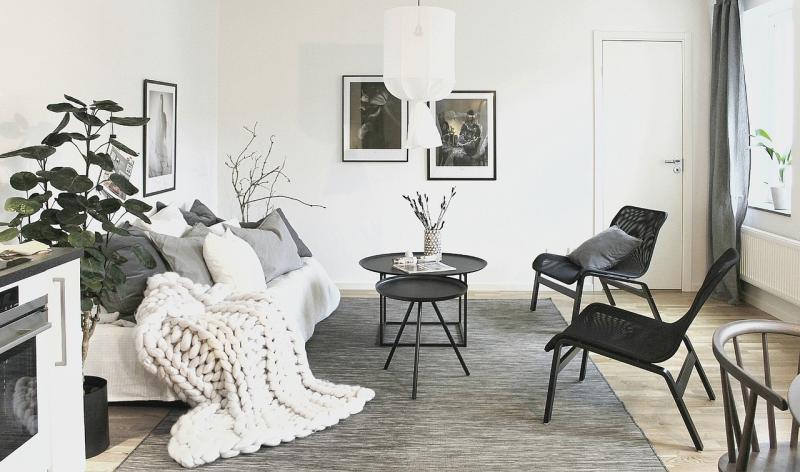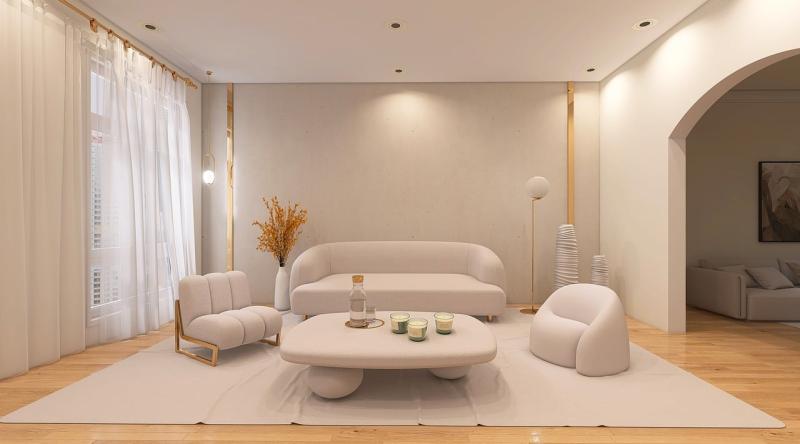Creating a calm space is an essential step towards embracing clarity in your minimalist home. The idea is to design a sanctuary that fosters relaxation and peace. Start by choosing a quiet area in your home where you can retreat from the chaos of daily life. This could be a corner of your living room, a bedroom, or even a small nook by a window.
Next, focus on the color palette. Soft, neutral tones like whites, beiges, and light grays can help create a serene atmosphere. Avoid bold colors and busy patterns, as these can be distracting and overwhelming. In your minimalist home, aim for simplicity with a few well-chosen decor items that evoke calmness, such as a single piece of art or a soothing plant.
Decluttering is key to your calm space. Remove any unnecessary items that do not contribute to your peace of mind. Keep your space organized and tidy, as clutter can create distractions and a sense of chaos. Incorporate functional storage solutions that blend seamlessly into your minimalist home, ensuring everything has its place while maintaining a clean aesthetic.
Finally, consider adding elements that promote tranquility. This could include soft lighting, comfortable seating, or even calming scents through candles or essential oils. By thoughtfully designing this area in your minimalist home, you’ll create a personal retreat that supports relaxation and mindfulness, helping you to recharge and find clarity amidst the demands of life.
Choose Essential Items
Start with the basics: furniture, kitchenware, and personal items that you use regularly. In a minimalist home, consider investing in versatile pieces. For example, a quality sofa can serve as a focal point in your living area while providing comfort. Opt for dishes that can be used for various occasions rather than a large set solely reserved for special events. This will help keep your space tidy and functional without unnecessary excess.
Next, focus on decor that reflects your personality while remaining simple. Choose a few meaningful art pieces or photographs that resonate with you. These should add character to your minimalist home without overwhelming it. Remember, the goal is to create a serene atmosphere that allows your space to breathe and promotes mental clarity.
Lastly, prioritize organization by selecting storage solutions that blend seamlessly with your home’s design. Use baskets, containers, and shelves that serve both form and function. By keeping your essentials neatly organized, you can maintain the clean lines and open spaces that are hallmarks of a minimalist home. As you curate your belongings, embrace the freedom that comes with simplicity, and let your space reflect a calm and intentional lifestyle.
Design for Functionality
When creating a minimalist home, it's essential to focus on design that enhances functionality. Each piece of furniture should serve a purpose, contributing to a space that feels open and uncluttered. By choosing items that are both aesthetically pleasing and practical, you can ensure that your living area remains efficient while still reflecting your personal style.
A well-designed minimalist home emphasizes clean lines and simple forms. This approach not only makes spaces look larger but also allows for easy movement and access. For instance, a sleek dining table can double as a workspace, making it a versatile addition to your home. Avoid overly ornate items that distract from functionality; instead, seek furnishings that blend seamlessly into your environment.
Additionally, storage solutions play a crucial role in maintaining the clarity of a minimalist home. Utilizing hidden storage options, such as under-bed drawers or built-in shelves, can help keep your belongings organized without compromising the open feel of your living space. By prioritizing storage that complements the overall design, you can achieve a space that is both beautiful and practical.
Lighting also deserves special attention in a minimalist home. Natural light should be maximized to create a bright, welcoming atmosphere. Simple window treatments can help control light while maintaining the clean look of the space. Consider light fixtures that are simple yet stylish, providing necessary illumination without overwhelming the design.
Maintain a Balanced Aesthetic
Creating a minimalist home goes beyond just reducing clutter; it involves maintaining a balanced aesthetic that is both pleasing and functional. A harmonious arrangement of space and objects will elevate the simplicity that a minimalist approach embodies. By thoughtfully selecting decor, furniture, and color schemes, you can achieve a serene environment that promotes clarity and peace.
One key aspect of a balanced aesthetic is the use of a limited color palette. Soft, neutral tones work wonderfully in a minimalist home, as they create a sense of cohesion throughout the space. Shades of white, beige, and light gray not only maximize natural light but also enhance the calm atmosphere associated with minimalism. You can add accents of color through carefully chosen artwork or decorative items, but it’s essential to keep these elements minimal to maintain that clear, uncluttered vibe.
In addition to color, consider the proportions and placement of furniture and decor. A minimalist home thrives on open spaces that allow for easy movement and visual flow. Opt for furniture that serves multiple purposes, such as a coffee table with storage or a bed frame with built-in drawers. This strategy not only saves space but also contributes to an overall balanced look, ensuring that each piece has a purpose without overwhelming the room.
Lastly, embrace the concept of negative space—a fundamental principle in minimalism. This refers to the empty areas surrounding your chosen decor and furniture, which serve to highlight them. By leaving portions of your home intentionally unadorned, you create a sense of order and tranquility. This approach allows the eye to rest and enhances the beauty of the items you have selected, making your minimalist home a true reflection of clarity and purpose.


